A wonderful holiday plant, known among amateur flower growers as the Decembrist, or Schlumbergera, pleases with its flowering during Christmas, which is reflected in its other popular name - the Christmas cactus. The plant is recognizable due to the segmented stems and bright flowers that appear at their ends and sides. They are usually red, pink, purple, yellow or white. Ripsalidopsis is also sometimes called a Christmas cactus, differing from Schlumbergera in more rounded leaf segments without teeth and in the shape of flowers. The buds of this plant appear during Easter. But their care is similar, the only difference is in the dormant period, due to which the fertilizer application time changes.
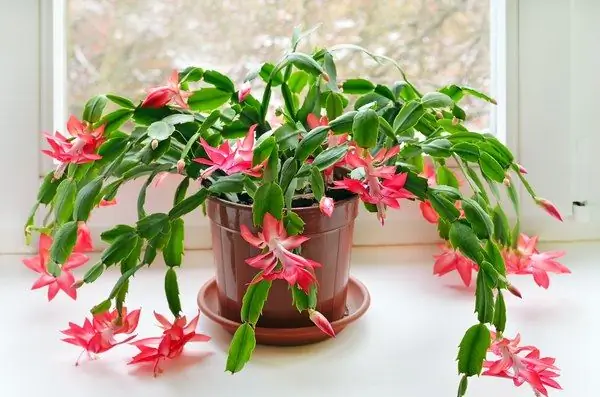
How to plant a Decembrist at home
Schlumbergera was developed from two unique parent plants that grow in the rainforests of South America, mostly in Brazil. If the flower is properly cared for,a month before Christmas, the tips of the leaves begin to grow. They become darker every day until a bud forms. Four weeks later, the buds open like magic, adding spring warmth and light to any holiday. Reproduction of the Decembrist is sometimes called seating, but this process does not mean dividing the bush during transplantation. The flower usually has only one stem, except when there are several plants in pots. Then it is easier to increase the number of Decembrists, but most often cuttings are used for reproduction.
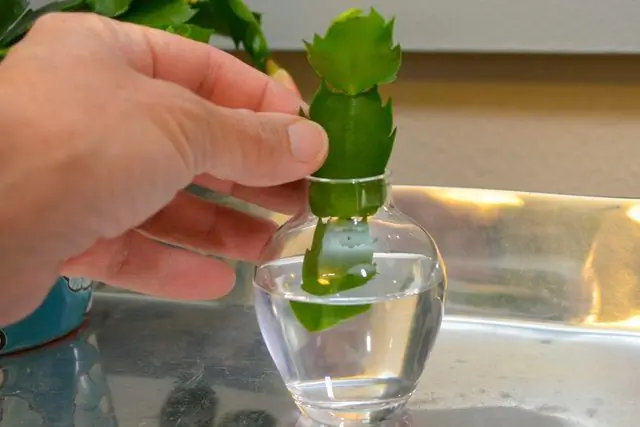
To separate several bushes, it is enough to remove them from the pot and carefully unravel the roots, and then place each of them in a separate container with new soil. In a couple of weeks, the Decembrist will take root and begin to grow. But what if there is only one stem in a pot, but you want to get more flowers for Christmas? This plant is considered a great gift for friends and relatives. Therefore, knowing how to plant a Decembrist at home without using the method of dividing a bush will help to please loved ones and show them a real winter miracle. For best results, propagate in the spring. Therefore, it is advisable to prepare for this in advance.
Christmas cactus breeding rules
Before the holidays, Schlumbergera can be found in supermarkets and speci alty stores in an already blooming state. This is usually how one-day plants are sold that die after flowering due to improper care andtransportation. But even they can be saved. To do this, you need to know how to plant a Decembrist flower and how to care for a young plant in order to get a flowering bush for the next year. Propagating a Christmas cactus is easy. Because it is a great way to share this wonderful plant with others. There are several ways to seat the Decembrist. But most often they resort to rooting parts of the plant. All you need to do is take the parts removed during pruning and place them in a new pot with suitable soil. More labor-intensive methods are less commonly used: grafting and seed propagation.
In order to understand how to properly seat the Decembrist at home, remember a few simple rules:
- Christmas cactus cuttings begin with cutting off the short Y-shaped tip of the stem. Before planting the Decembrist, you will have to find a part of the plant, consisting of at least two or three connected segments. Shoots obtained after shaping will also work.
- Cuttings are selected from he althy foliage. Then they are dried for several hours. This is necessary to avoid rotting from excessive moisture when planting.
When breeding in water, it is important to keep it clean and constantly change it. Otherwise, bacteria that appear in the water can also lead to rotting of the plant. There is also a way to seat the Decembrist with a sheet. In this case, exactly the same techniques are used as for cuttings, but for propagation they break off one plate, and not the entire branch.
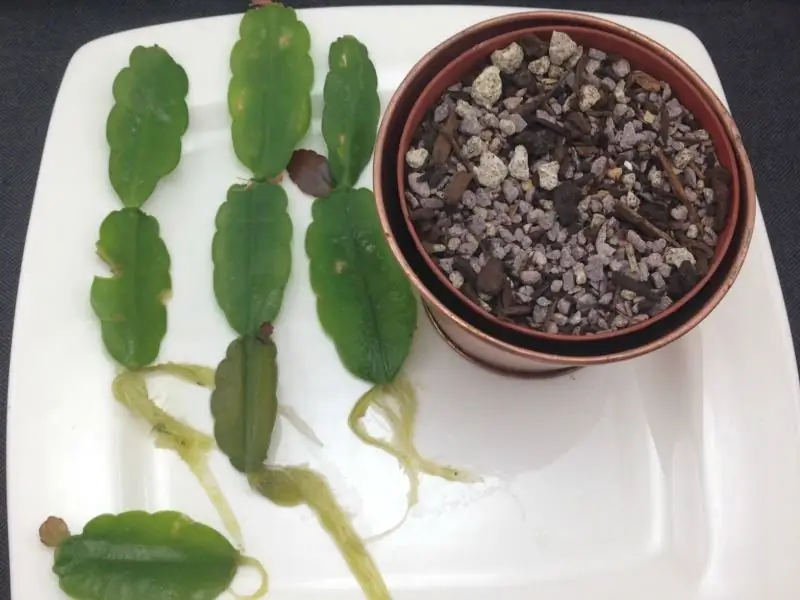
Reproduction of the Decembrist seeds
Cuttings are the best way to properly plant a rare variety of Decembrists. Vegetative propagation gives 100% transmission of the characteristics of the parent plant, in contrast to seed germination. But the second method is often used to obtain new varieties of the Decembrist. Seeds can be obtained by manually pollinating two different plants on the third day of flowering. Pollen is usually transferred with a cotton swab or brush. It is important that the plants are not related. The dominant features will be pink and purple tones. Pollen is preserved for more than a week, therefore it can be preserved if the periods of two Decembrists do not coincide. With successful pollination, in a few days the flowers will fall off, and berries will be tied in their place.
Each fruit will contain approximately 50 seeds. They remain viable for several years, but yearlings germinate best. You can store them at 50% humidity in a clean linen bag. After cleaning the seeds from the pulp and drying, you can start sowing. First, disinfection is carried out. To do this, the seeds are soaked in a pink solution of potassium permanganate or three percent peroxide. Pathogenic microbes die, which helps the seedlings germinate. Soaking in monosodium glutamate or a growth stimulator will also help improve germination. The planting container is pre-treated with alcohol or another disinfectant. Seeds are sown superficially in a well-moistened soil of sand and universal soil, preferably in the spring. They do not sprinkle with earth, they only lightly press it into the surface.
Careseedlings
Sometimes greenhouse conditions are used for better germination of Christmas cactus seeds. To do this, the container with crops is covered with a lid or film. But it is important to monitor the humidity and air the seedlings daily so that they do not rot. The temperature in the room where the seed container is located should not fall below +20 ° C, and it is important to protect the place from drafts. Because the Decembrist does not like a sharp change in the conditions of detention, and the seedlings are very tender and more difficult to tolerate. The soil is moistened with a spray gun to maintain moderate moisture.
Seeds can tolerate short-term overdrying, but it is better not to allow this. Seedlings can be dived a month after the appearance of the first shoots. Six months later, strong sprouts will appear, which are transplanted into separate pots. Even if some of the seeds did not germinate, do not throw away the container. Some of them may still rise after some time. The first year the seedlings grow very slowly, and they can bloom after a year and a half. Caring for them is the same as for crops: spraying with a spray bottle, observing the temperature regime and protecting against drafts.

Decembrist transplantation and anti-aging pruning
Christmas cacti prefer small pots. With a lack of space for the root system, the plant blooms better. This means that it will not need to be repotted more than once every 2-3 years. To do this, use a slightly larger pot and well-drained soil. Transplantation of the Decembrist, whose careproduced according to the recommendations, preferably in the spring or early summer. This allows the plant to take root before flowering during the holidays. But don't repot your Christmas cactus while it's in bloom. Otherwise, the buds may fall off.
It is advisable to add fertilizer to the soil to help the growth of plants. Decembrist after transplantation is not watered for 3-4 days. Fertilize after a month, but stop feeding about a month before the buds appear, usually by the end of October. Anti-aging pruning of the plant is usually carried out about a month after flowering is completed. This will encourage the plant to branch and start growing again after a short rest period. You don't need sharp tools to prune your Christmas cactus. It is enough just to turn the stem between the segments and remove the part. If the plant grows too fast, you can cut up to 1/3 of the green mass each year without harming the plant. Also, pruning is the best option to share a rare varietal plant, as all signs of the mother flower will be preserved.
How to choose soil
Before planting a Decembrist at home, it is important to choose the right soil composition for it. The flower prefers a slightly acidic environment, so bark is sometimes added to the substrate for better growth. Christmas cacti need nutritious, well-drained soil. And this means that the usual universal mixture with the addition of sphagnum and perlite is suitable. A good drainage layer of expanded clay or large pebbles is placed in the pot. This is necessary so that the roots do not rot. Fertilize this plantafter successful rooting, it should be diluted with mineral fertilizer every two weeks, but you should not use organic matter. It is important to remember that the Christmas cactus should be stopped feeding about a month before the winter bloom, which usually means the end of October.
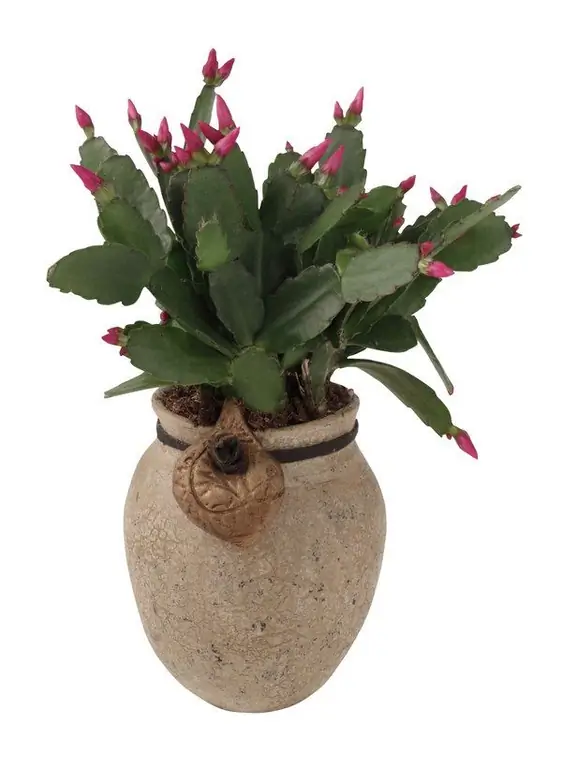
Lighting Tips
This plant loves a lot of sunlight, but prefers not to be exposed to direct rays. They can easily burn tender leaves, so east or north facing windows are best for hosting a Christmas cactus. Before seating the Decembrists at home, it is worth picking up such a place in advance. It is able to adapt to low light conditions, but only blooms in bright, indirect light. The flower does not like to be rotated and moved around in its pot, especially during the flowering period, therefore it is desirable that the place be permanent and no reshuffling is required.
Rooting Decembrist cuttings in the soil
After drying, the shoot is placed in a small container with a mixture of peat and sand or 1/2 part of coconut soil and 1/2 perlite. Before planting, the soil is thoroughly mixed and moistened, then a recess is made in it. The cutting should be about a quarter of the length below the soil surface and vertical. The pot with the shoot is placed in a well-lit place, avoiding direct sunlight.
Too much heat and light can stun growth and burn the leaves. It should also be kept away from drafts and otherhot air sources. It is not necessary to water the plant abundantly, otherwise it may rot. After about two or three weeks of Christmas cactus propagation, the cutting should show signs of new growth at the tips of the leaves. They are usually reddish in color. It is advisable to support long cuttings with a stick. Otherwise, they will bend down to the ground, which will damage the delicate roots.
Replanting a rooted shoot
After the cutting is rooted, it can be transplanted into a larger pot with loose soil. It is advisable to add a small amount of sand or compost. It is important not to water too much and not let it dry out. You can use a spray bottle and spray the surface of the soil until the top of the soil is damp. As the cuttings grow, you can water them deeper. A small watering can or a small bottle will do for this.
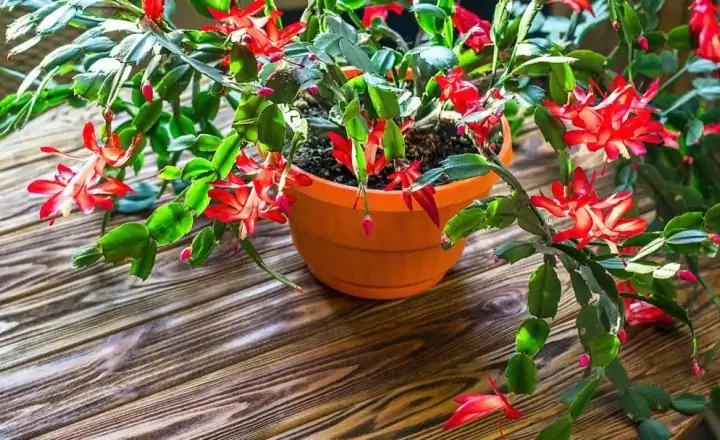
The answer to the question of when the Decembrists can be seated is simple - any time will do. Even the flowering period, but only if there is no fear of losing some of the buds. Experienced flower growers prefer to root the cuttings immediately after pruning, after drying them. But if you carefully unscrew the shoot from a flowering plant without turning the pot over, all the buds should remain in place. After the cutting has rooted and a few new shoots have appeared, the young plant is pinched to stimulate the emergence of new shoots. With more branches, flowering will be more abundant.
Caring for a young plant
The water method may seem easierthan propagation in the soil, but, nevertheless, it rarely leads to a satisfactory result due to changes in the conditions of detention. It is more difficult for such a process to take root and adapt in the ground. Rooting in the substrate is the easiest way to plant a Decembrist with cuttings. At the beginning, some flowers may fade, but this is normal. In the end, everything will be restored.
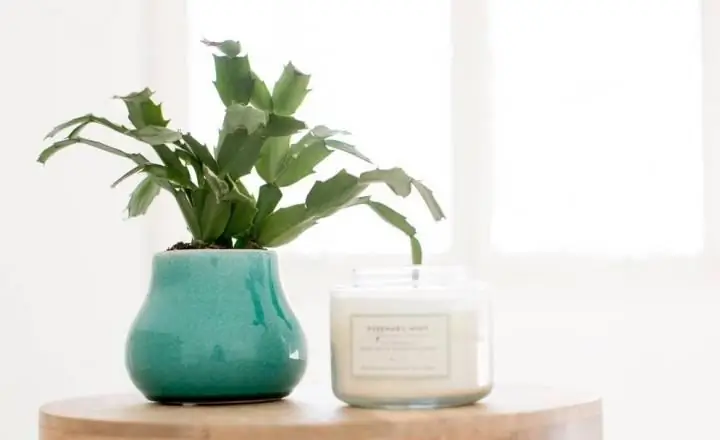
Further care and transplantation of the Decembrist flower is also quite simple. Now the young plant can be watered more often, fertilized and additionally illuminated. For abundant winter flowering, the plant needs a little care. Christmas cacti need care very similar to that required when growing succulents. Growth requires moist soil, but these plants do not like to be in a pool of water. The best way to know when to water your Christmas cactus is to test the soil with your finger. Too much moisture can cause brown spots or root rot, and not enough can cause flowering problems.






